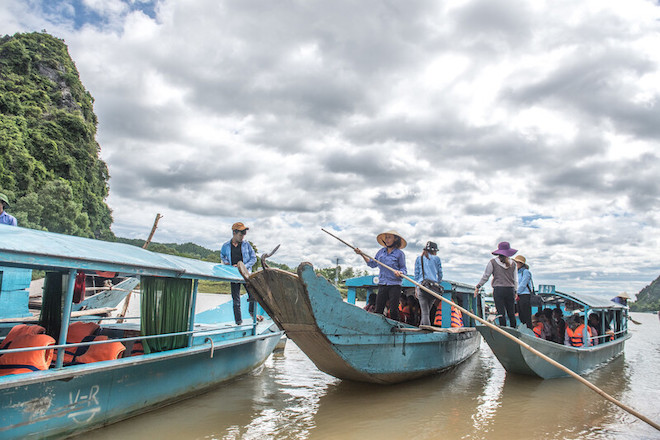
This article is published in collaboration with the Pacific Asia Travel Association.
How can climate adaptation strategies be supported by tourism? Is there a possibility that there is actually a close connection between tourism and climate adaptation? Maybe. Is there a possibility that the pandemic might have, or might be, making climate adaptation in tourism a more plausible idea? Could be.
Adapting to climate change impacts in an industry considered to be a vulnerable and highly climate-sensitive economic sector, could be both challenging and complicated. Tourism could be an ideal industry to support climate adaptation. Ideal in the sense that it is an industry with many sectors, with many opportunities to engage and involve stakeholders.
Increasing resilience
Tourism’s contribution to greenhouse gas emissions was estimated to be approximately 8%. The call to increase resilience to enable adaptation in more places will surely be getting louder.
We urgently need, among a host of things:
- Tourism policies that promote adaptation, both directly and indirectly.
- Smaller tourism destinations to also understand the potential roles they can play, in supporting adaptation strategies.
- Tourist attractions to think about increasing resilience to facilitate adaptation.
- More tourist activities that can promote the idea of adaptation.
It is pertinent that tourist attractions think about ways to increase resilience, so that climate adaptation has a higher chance of succeeding. Whatever that might mean, in cases where adaptation could be a very complicated issue, it might also mean interesting opportunities arising. Perhaps, opportunities to engage the informal sector and those who otherwise may rarely benefit from tourism’s growth.
One example of a destination increasing resilience of its tourism industry to climate change is Mexico. A GIZ-backed project in Mexico illustrated that rising temperatures in some regions of the Latin American country have put places at risk of losing their appeal as tourist destinations. Some coastal regions are heavily threatened by rising sea levels, human-induced erosion of beaches, and hurricanes.
We need tourism destinations to:
- Formulate tourism policies that reflect adaptation practices and climate resilience.
- Come up with innovative tourism activities that support adaptation.
- Think of how tourists can play a part in helping destinations increase resilience.
Deploying innovative strategies
In response to the decrease in snow cover due to climate change, the Whistler Blackcomb Ski Resort in British Columbia, Canada deployed innovative adaptation strategies like cloud seeding as applied in some ski resorts in Colorado to produce additional precipitation. However, it had mixed results. The resort has also moved some its ski areas to higher terrain to conserve snow.
In Mexico, environmental changes are endangering coral reefs and the scuba diving tourism that they attract. To enable the tourism industry to adapt to climate change, the GIZ-backed project deploys information events, promoting dialogue between the public and private sectors, and technical training in assessing climate risks from an economic perspective.
Adaptation must be local—some tourism destinations that are smaller will have to think about how adaptation practices, particularly those that are related to the local culture and heritage, can be supported by tourism activities. The modern traveler seeks learning experiences in his or her travels, and this presents opportunities to do so.
Uniting communities
Adaptation could be a factor that unites local communities, by bringing local communities together to brainstorm solutions to contemporary challenges. In other cases, it could also be something that forms the basis of sustainable tourism practices.
New Zealand’s tourism industry launched their Tourism Carbon Challenge, which contains some proposed actions that are adapting the industry to climate change. The country is urging tourism business to measure its carbon footprint, to think about innovation by collaboration and research, to introduce carbon reduction initiatives, among many proposed actions. Ziptrek Ecotours from New Zealand is educating their clients and passengers on climate change and the travels; the company also started measuring its carbon emissions years ago and for 3 years have achieved zero-carbon business certification as they offset 100% of carbon emissions.
In conclusion, climate adaptation will likely be one of the issues many tourism destinations include in their planning. Different strategies dealing with contemporary tourism issues (like mass tourism) will be linked to adaptation and increasing of resilience. Could the COVID-19 pandemic be actually pushing us to think a bit more about the idea of climate adaptation in tourism?
 Kevin Phun
Kevin Phun
Director, Centre for Responsible Tourism
Kevin Phun is an occasional practitioner in responsible tourism and a tutor in the discipline in various colleges in Singapore, as well as an affiliate lecturer at a few Australian and United Kingdom university programs.
The article is reposted with permission from Centre for Responsible Tourism, a member of the Pacific Asia Travel Association that provides evidence-based research and analysis to governments, policymakers, tourism businesses, nonprofit organizations, and international agencies to increase the positive global impact of responsible tourism.


